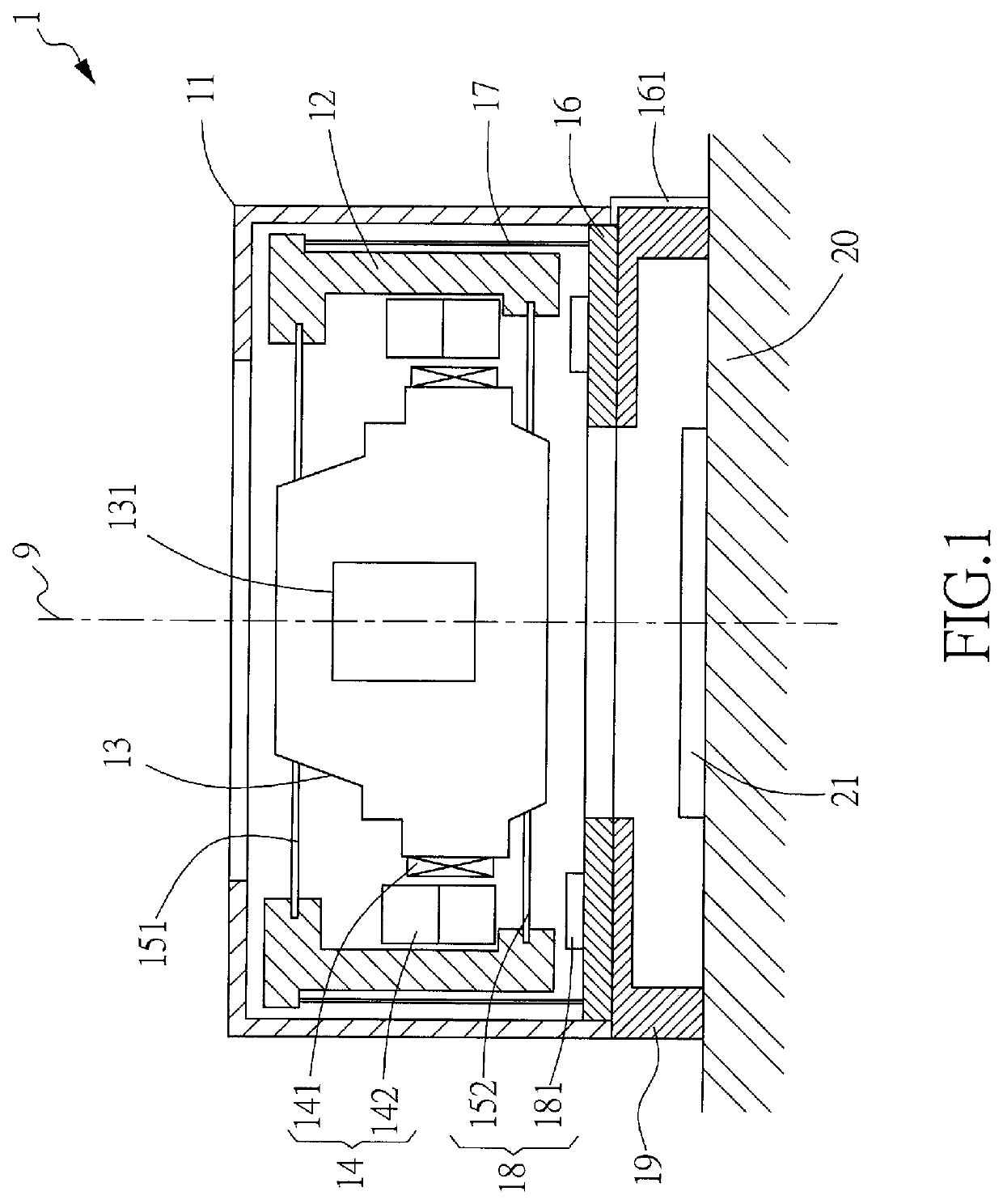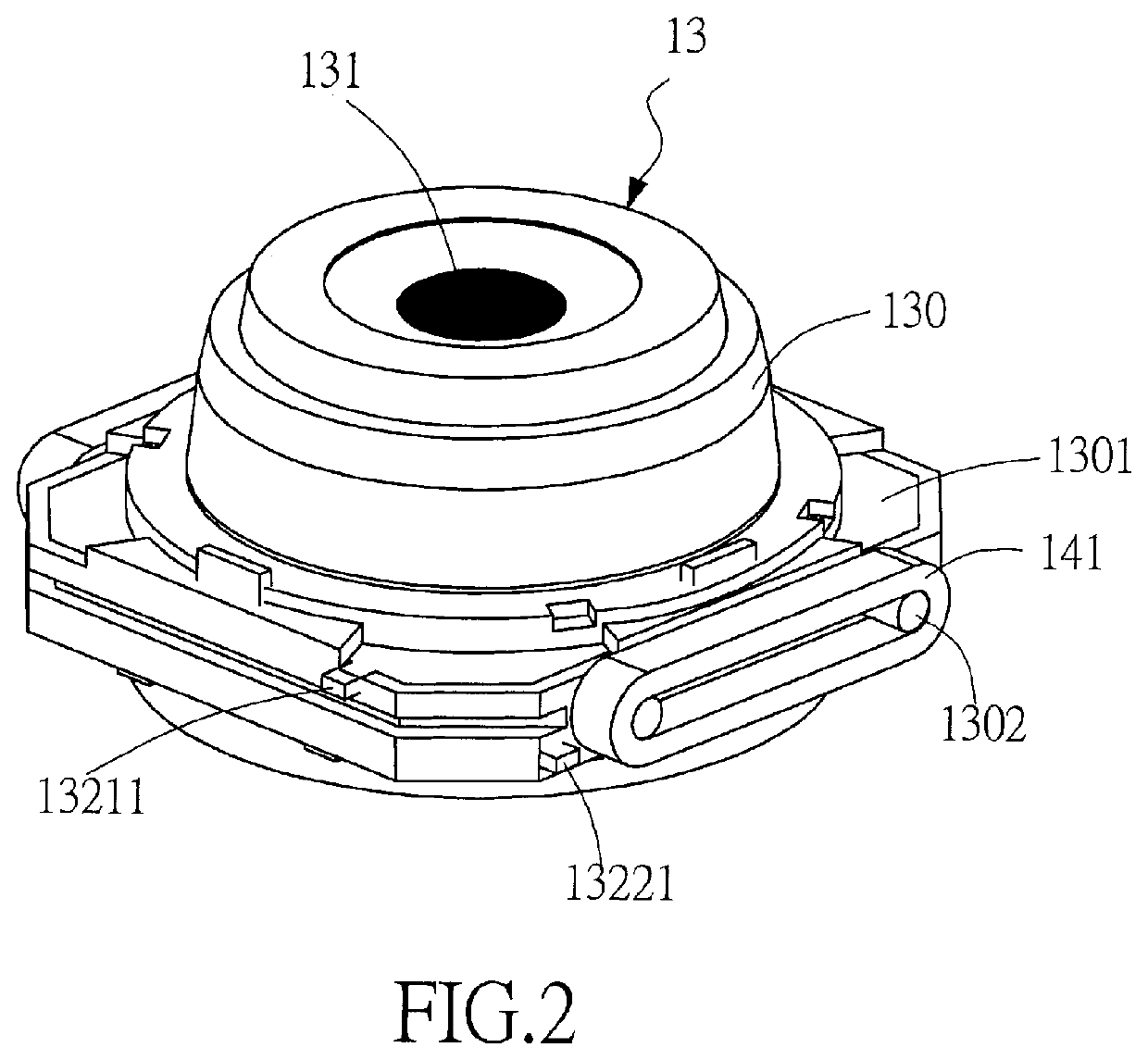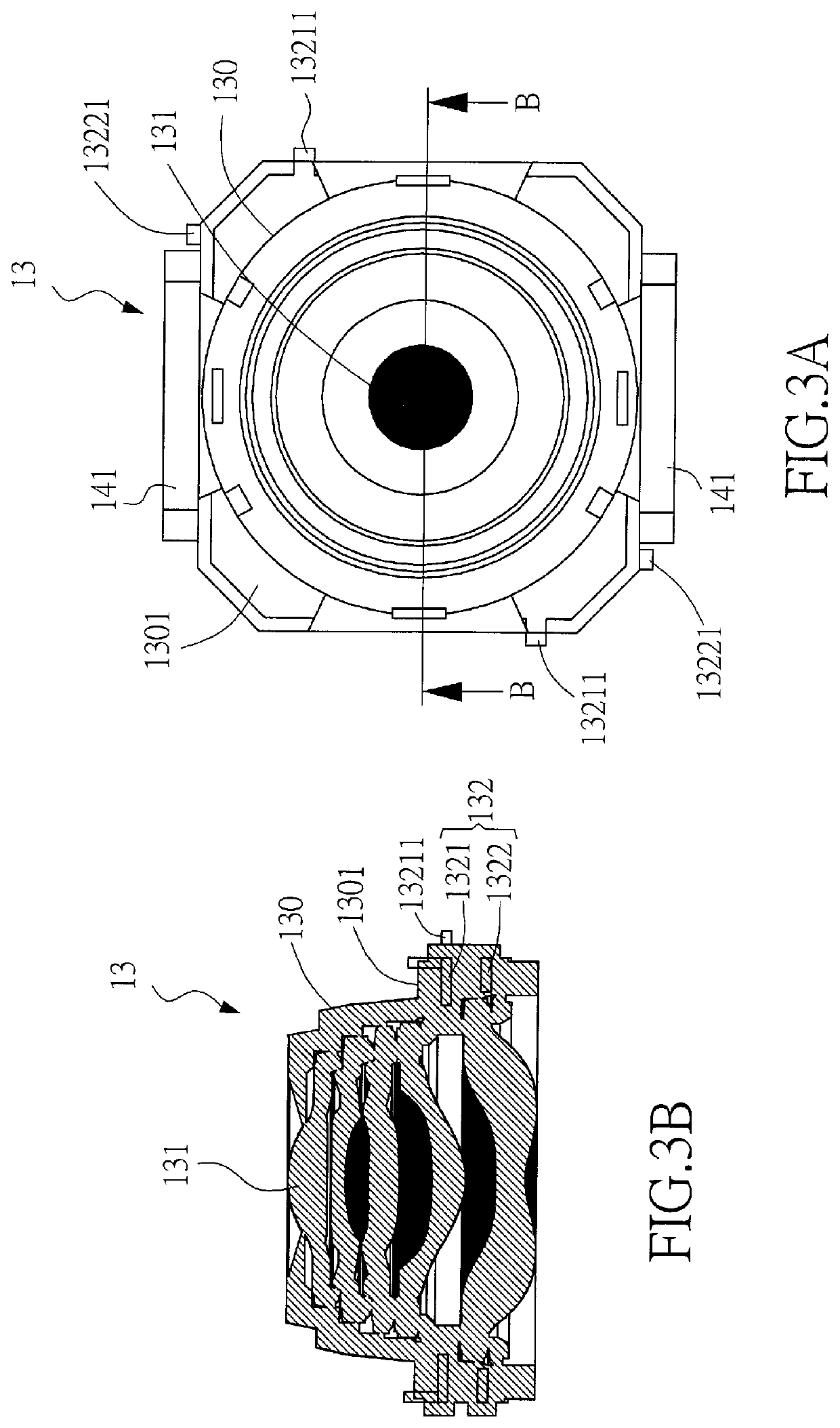Lens module
a technology of lens module and lens body, applied in the field of lens module, can solve the problems of reducing the quality of images, reducing the ability of image capture module, and weak structural strength, so as to improve the ability of impact, increase the structural strength, and endure the effect of friction
- Summary
- Abstract
- Description
- Claims
- Application Information
AI Technical Summary
Benefits of technology
Problems solved by technology
Method used
Image
Examples
first embodiment
[0075]As shown in FIG. 2, in the present invention, the lens unit 13 further comprises: a body 130, at least one lens 131, and at least one embedded member 132 (see also FIG. 4). The body 130 is made of a first material. The body 130 has a rim portion 1301, a central through hole, and a plurality of positioning elements 1302. The positioning elements 1302 can be wound or fitted by the coil 141 to achieve the function of fixing the coil 141 to the positioning elements 1302. In this embodiment, the coil 141 can be a flat coil to reduce space and increase strength. The at least one lens 131 is located at the central through hole of the body 130. An optical axis can be defined by the at least one lens 131 for an external image light to pass through the lens unit 13 along the optical axis. The at least one embedded member 132 is made of a second material, and the hardness of the second material is greater than the hardness of the first material. The lens unit 13 is integrally formed by e...
third embodiment
[0083]Please refer to FIG. 8, which is a perspective view of the lens unit placed on the bottom plate of the present invention as shown in FIG. 6. In this embodiment, the plastic bottom plate 19 can also be embedded with a metal embedded member (not shown in this figure) by using the plastic insert-molding process or other processes. In addition, a plurality of protrusions 193 projected upwardly are also provided on the embedded member such that the protrusions 193 can protrude upward and be exposed to the upper surface of the bottom plate 19. When the lens unit 13 is driven by the first driving module to move relative to the bottom plate 19 along the optical axis, the bottom plate 19 provides a stopping function for the lower end of the lens unit 13 to limit the moving range of the lens unit 13. The positions of the upwardly projected protrusions 193 exposed on the upper surface of the bottom plate 19 respectively correspond to the positions of the additional protrusions 13222 prot...
PUM
 Login to View More
Login to View More Abstract
Description
Claims
Application Information
 Login to View More
Login to View More - R&D
- Intellectual Property
- Life Sciences
- Materials
- Tech Scout
- Unparalleled Data Quality
- Higher Quality Content
- 60% Fewer Hallucinations
Browse by: Latest US Patents, China's latest patents, Technical Efficacy Thesaurus, Application Domain, Technology Topic, Popular Technical Reports.
© 2025 PatSnap. All rights reserved.Legal|Privacy policy|Modern Slavery Act Transparency Statement|Sitemap|About US| Contact US: help@patsnap.com



